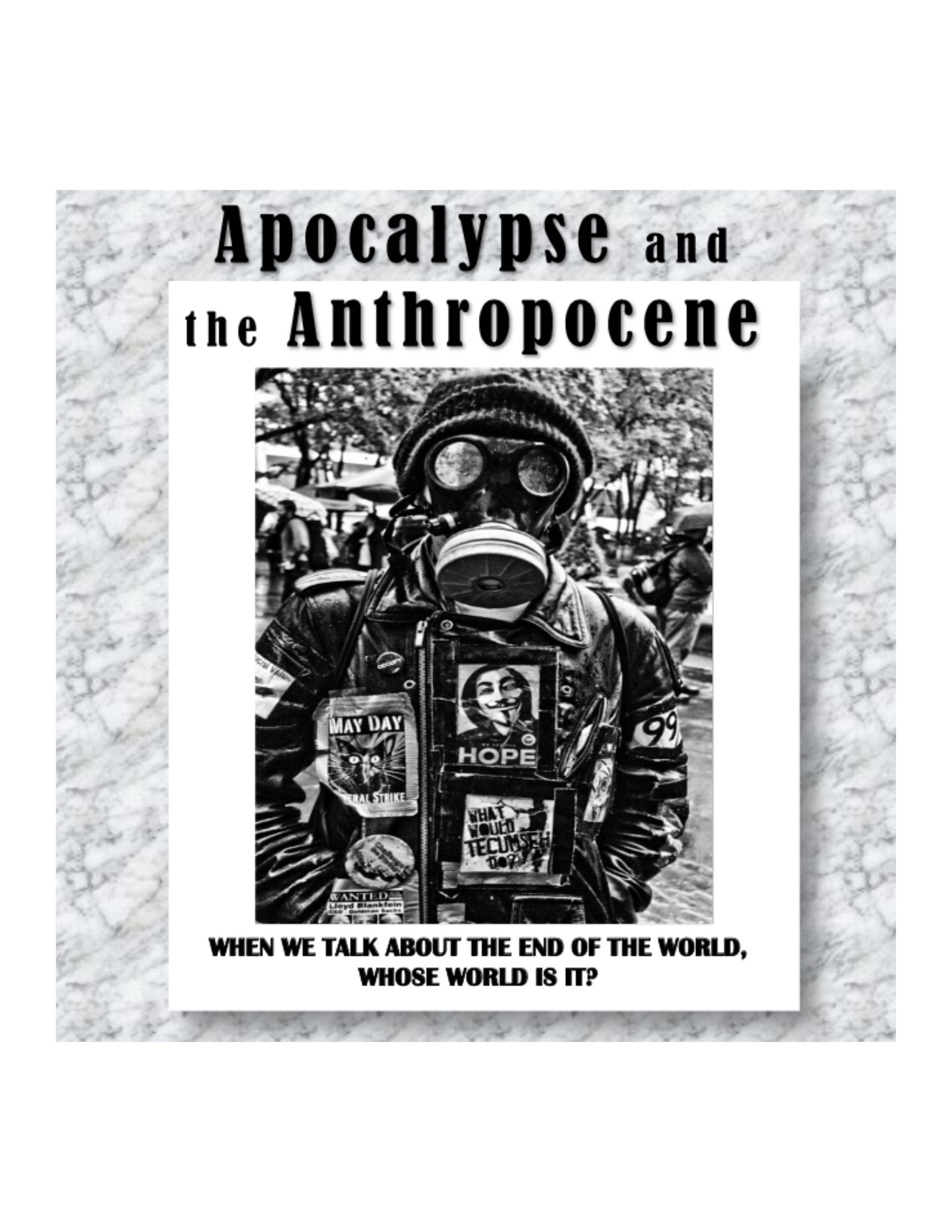Apocalypse and the Anthropocene: A Broadsheet
June 10, 2020
The spring course “Apocalypse and the Anthropocene,” taught by PPEH Postdoctoral Fellow April Anson, explored the narrative mode of the apocalypse in the context of the geologic designation of the Anthropocene. In this upper-division English class, we focused on the ways apocalyptic stories represent and contest the exploitative, extractive, and unequal power relations that the “era of the human” includes. We paid special attention to American notions of nature and stewardship as they relate to geologic time, climate change, and the legacies of genocide, slavery, colonialism, and capitalism–and investigated the ways works of art attempt to render these complex and perhaps overwhelming concepts comprehensible so that we may envision and enact just futures.
In the beginning of the term, we talked about how universals are, at best, ineffectual and, at worst, violent. Then, just as the course turned to the subject of ecofascism, the pandemic hit. We watched together, in real time, as claims of “we are the virus” appeared alongside assertions that “the nation may be better off letting a few hundred thousand people die.” Collectively, we recognized that we were, in fact, experiencing something together with the entire globe, though our experiences continue to be so divergent as to warrant seeing them as different worlds altogether.
In the space of a few weeks, our understanding of the Anthropocene went from geologic to microscopic, from thinking about the “white geology” of the era to its diffuse atomization into the atmospheric. The Anthropocene is a term that, though coined by geologists, has always been, productively or not, conflated with climate change and the apocalyptic imaginary. As the course rounded to a close, we acknowledged and enacted this immense flexibility, taking these epochal concepts and generic story forms into our lived realities–recognizing the materials we hold, the materialities we ignore, and all that we make and remake in starts and stops. We ended the term reading manifestos, manifesting our own research in the form of a digital broadsheet, and acknowledging that in the midst of the surreal, story shapes the real.
We hope that in sharing our thinking here, we call in more just futures for all of our diverse and divergent communities, remembering that safety is not a seal but, rather, a sequence of commitments to collective well-being.
Take care,
the class of “Apocalypse and the Anthropocene”
Click on the right side of the image to advance to the next page


















